
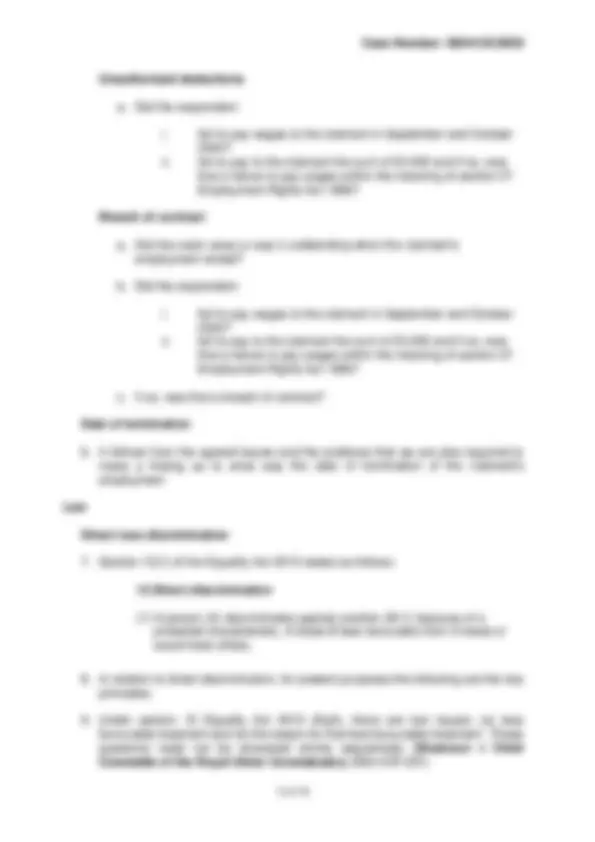
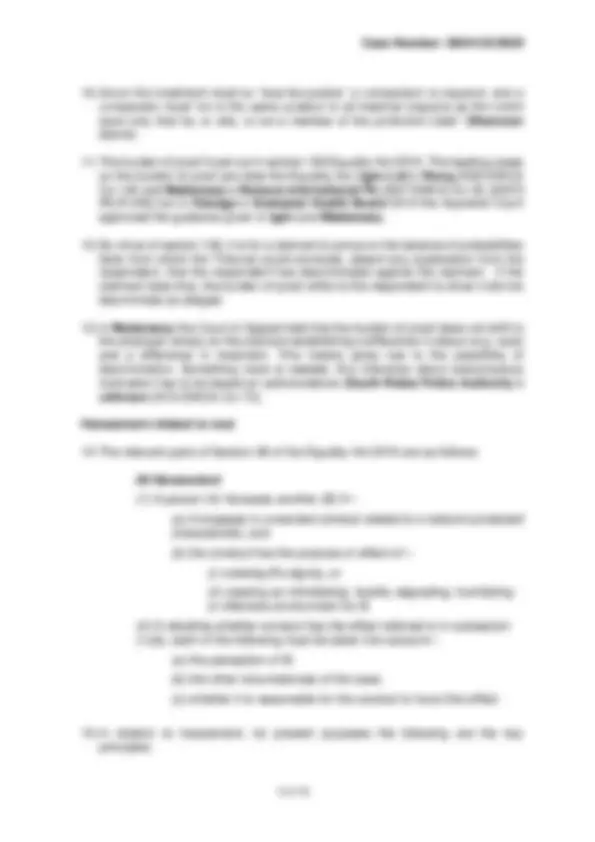
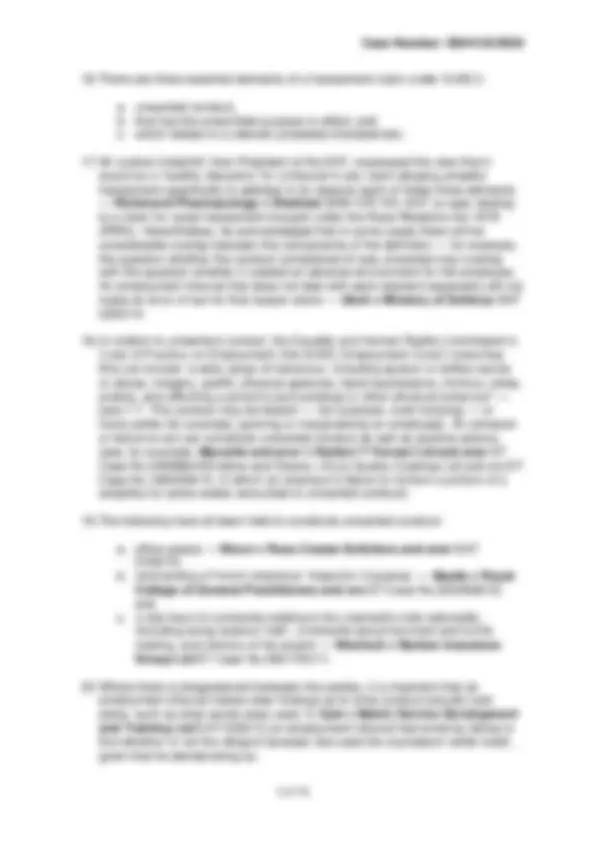
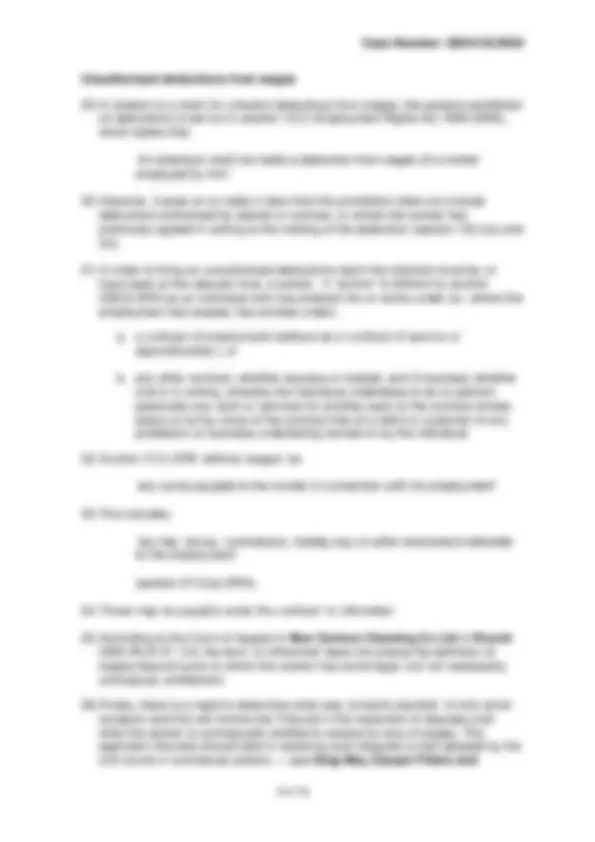
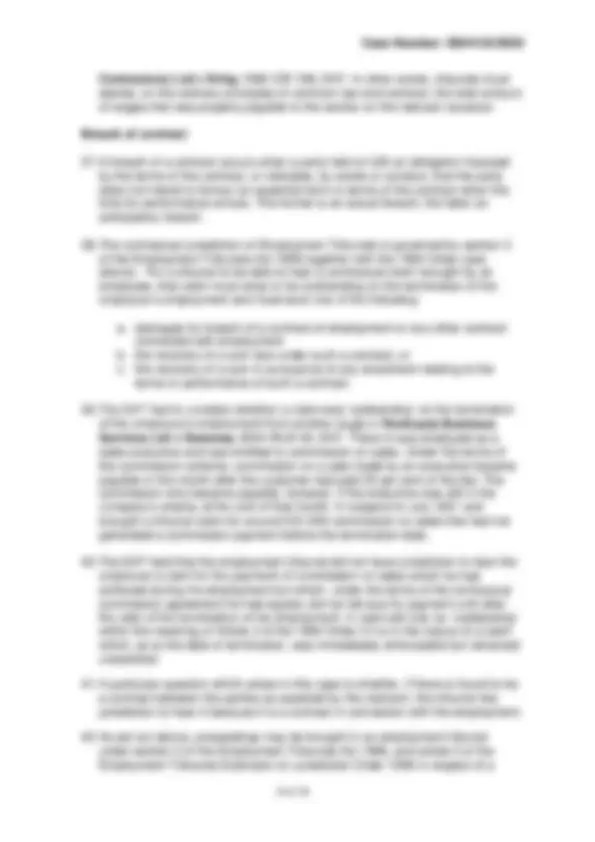
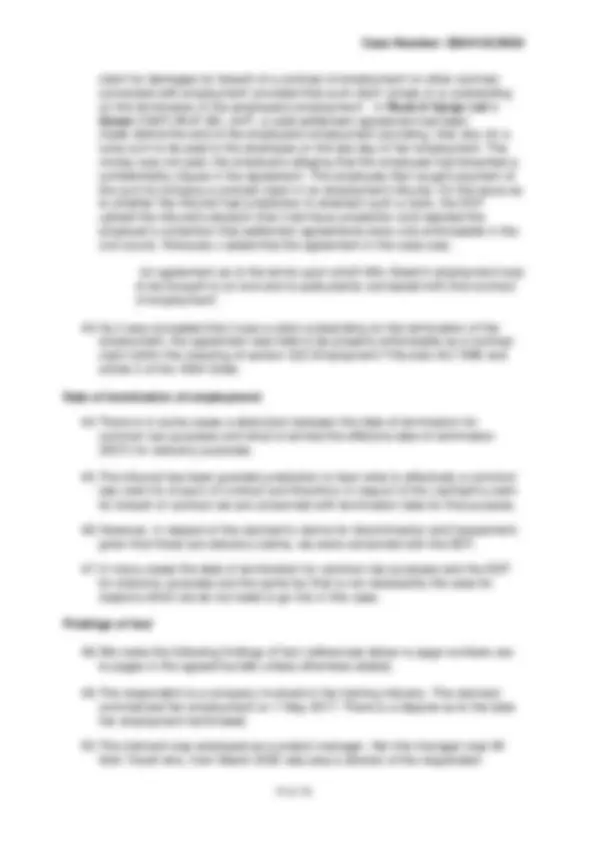
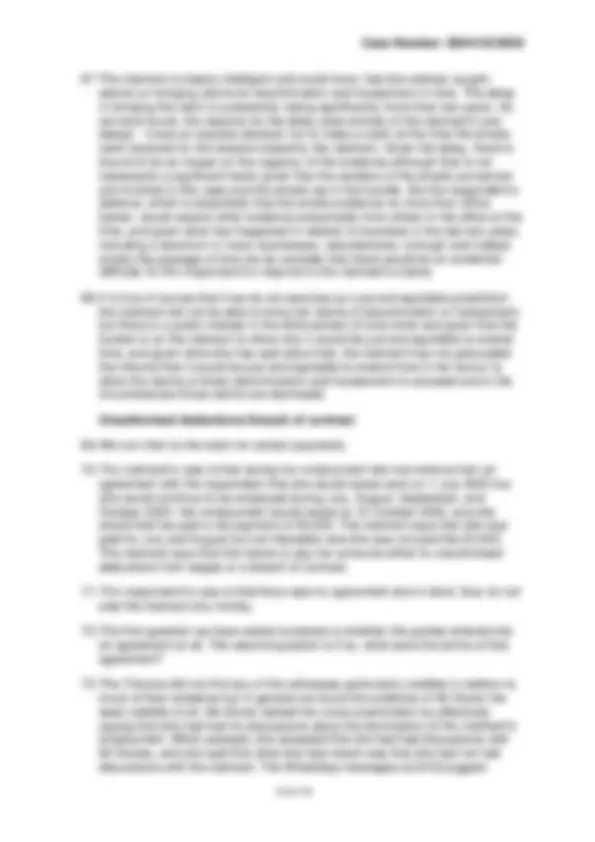
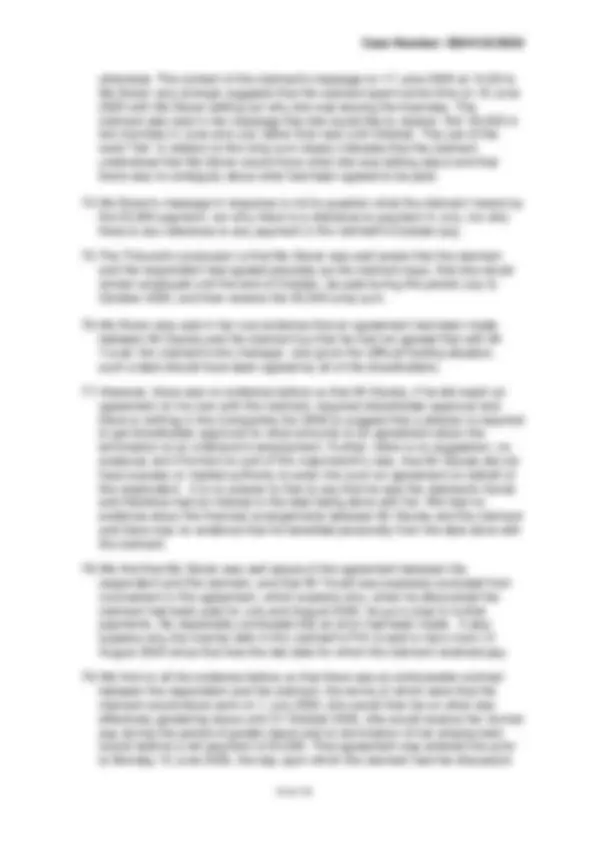
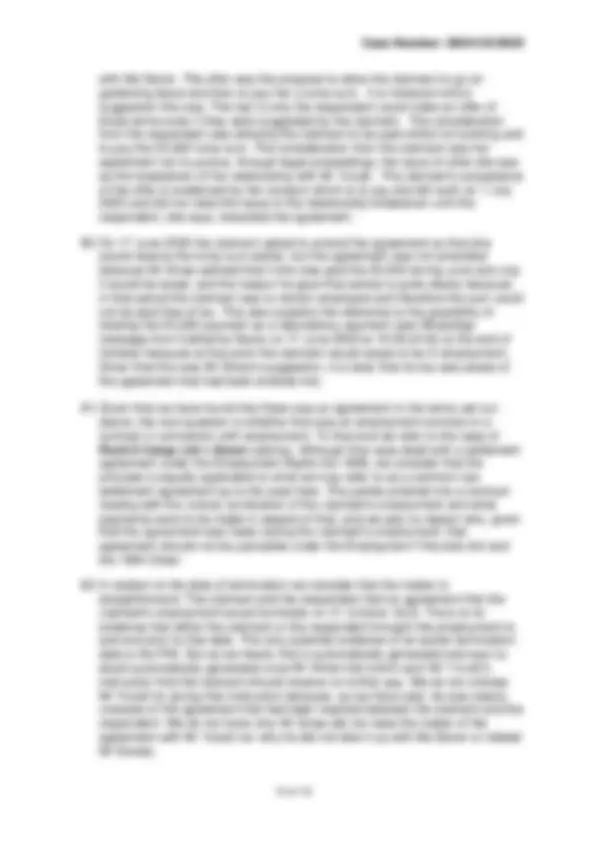


Study with the several resources on Docsity

Earn points by helping other students or get them with a premium plan


Prepare for your exams
Study with the several resources on Docsity

Earn points to download
Earn points by helping other students or get them with a premium plan
Community
Ask the community for help and clear up your study doubts
Discover the best universities in your country according to Docsity users
Free resources
Download our free guides on studying techniques, anxiety management strategies, and thesis advice from Docsity tutors
A case where an employee brought claims of race discrimination, harassment, and unauthorized deductions from wages against her employer. The document also covers the legal framework around harassment and unauthorized deductions, as well as the tribunal's decision on the case. The document may be useful for university students studying employment law, labor law, or human resources management.
What you will learn
Typology: Study Guides, Projects, Research
1 / 16

This page cannot be seen from the preview
Don't miss anything!










Claimant: Ms K Papadopoulou Respondent: Essential Site Skills Limited Heard at: Midlands East Tribunal via Cloud Video Platform On: 19, 20 and 21 April 2022 Before: Employment Judge Brewer Ms J Bonser Mr C Goldson Representation Claimant: In person Respondent: Ms E Evans-Jarvis, Solicitor
The unanimous decision of the tribunal is:
Introduction
stunning blow. However, the EAT found it hard to see that the tribunal had shown how it found that the requisite environment was thereby created. Discrimination/Harassment time limits
Unauthorised deductions from wages
claim for damages for breach of a contract of employment 'or other contract connected with employment' provided that such claim 'arises or is outstanding on the termination of the employee's employment'. In Rock-It Cargo Ltd v Green [1997] IRLR 581 , EAT, a valid settlement agreement had been made before the end of the employee's employment providing, inter alia, for a lump sum to be paid to the employee on the last day of her employment. The money was not paid, the employers alleging that the employee had breached a confidentiality clause in the agreement. The employee then sought payment of the sum by bringing a contract claim in an employment tribunal. On the issue as to whether the tribunal had jurisdiction to entertain such a claim, the EAT upheld the tribunal's decision that it did have jurisdiction and rejected the employer's contention that settlement agreements were only enforceable in the civil courts. Kirkwood J stated that the agreement in this case was: 'an agreement as to the terms upon which Mrs Green's employment was to be brought to an end and is quite plainly connected with that contract of employment'.
company but not a shareholder. At the material times there were three shareholders in the company being Catherine Storer, Stuart Goodman and Gareth Davies. All three shareholders were also company directors although on the evidence we heard it would appear that Mr Goodman did not play an active role in the business, or if he did, he was not involved in any of the matters to which this case relates.
otherwise. The content of the claimant's message on 17 June 2020 at 14:29 to Ms Storer very strongly suggests that the claimant spent some time on 15 June 2020 with Ms Storer setting out why she was leaving the business. The claimant also said in her message that she would like to receive “the” £5,000 in two tranches in June and July rather than wait until October. The use of the word “the” in relation to the lump sum clearly indicates that the claimant understood that Ms Storer would know what she was talking about and that there was no ambiguity about what had been agreed to be paid.